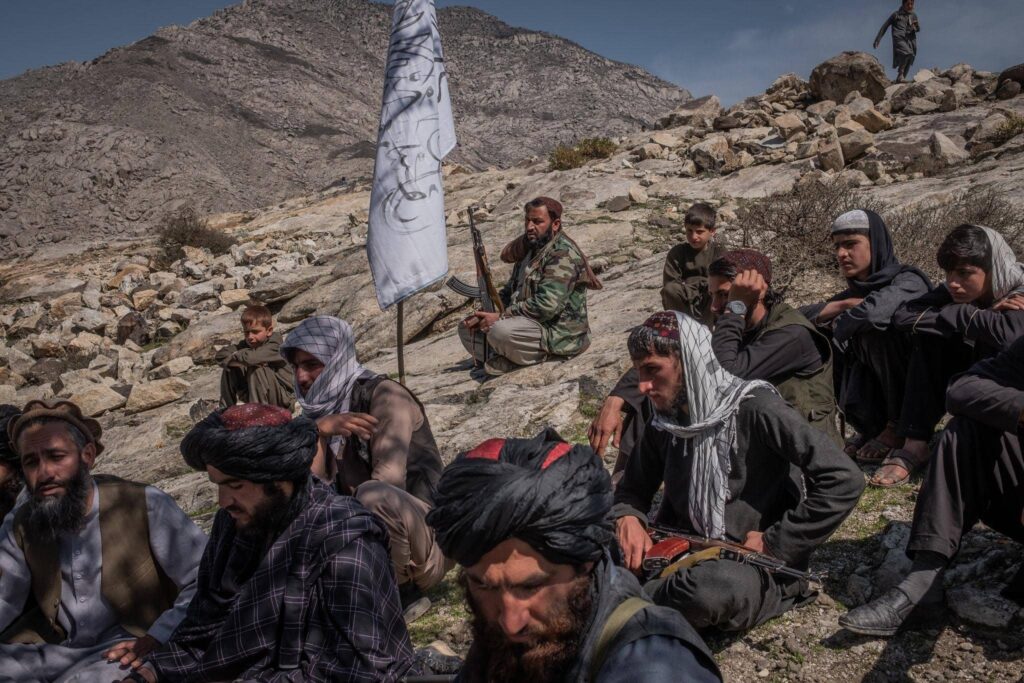The Islamic fundamentalist group ruled Afghanistan from 1996; post the Soviet withdrawal, until the US-led invasion on Afghan soil in 2001. Its rule was nothing less than draconian with its desire to turn Afghanistan into an Islamic emirate, following the strict interpretation of the Sharia law. Large-scale human rights violations, violence, extortions, public executions, heinous crimes against women and minorities were the order of the day under the Taliban rule. The US invaded Afghanistan to oust the Taliban for harboring Al-Qaeda operatives and its leader Osama Bin Laden, post the 9/11 attacks.
Having successfully defeated the Taliban, the Taliban was forced to disperse, regroup and relocate. Since then, it has waged an insurgency against the US-led coalition in Kabul, resulting in an unimaginable number of causalities, destruction, and crisis. Following the February 2020 peace talks that culminated with the US decision to withdraw its troops, the Taliban continued to launch offensives and stood stronger than they had ever been in the past twenty years. Having made lightning advances, the Taliban swept across Afghanistan bringing to an end the decades-long US presence in the country and opening the door for an uncertain, grim, and hopeless future for Afghanistan and its people.
Source – The New York Times
With the Taliban back in the ruling seat, the question that everyone is pondering over is “what does this mean for the Afghan people?” It’s safe to say that millions of lives will now depend on the way the Taliban’s newly formed interim government chooses to govern. The Taliban has sought to recast itself on the lines of a more moderate approach; seeking international recognition, claiming to provide amnesty for their enemies, promoting inclusivity, severing ties with terrorist and other militant groups, and allowing women to work within the rules of the Sharia law.
However, their actions in the recent past reinforce the fact that their nature is truly unchanged, and that they might have modified their strategies but their stringent, conservative ideology stays the same. Hopes of achieving any kind of progress and development under such conditions remain bleak. Most members of the global community and the Afghans see the newly appointed all-male Cabinet as a disappointment. Mullah Mohammad Hassan was named the acting Prime Minister of the group at a press conference in Kabul.
Ghani Baradar, one of the most prominent public faces of the group, who signed a peace deal with the Trump administration in 2020, will function as his deputy. The leader of the Haqqani Network, Sirajuddin Haqqani, who is also on the FBI’s most-wanted list for terrorism, will be serving as the acting interior minister. This particularly complicates the global response, as cooperation was specifically contingent upon the Taliban cutting all ties with terrorist groups. The absence of women, non-Taliban members, and figures from the former government is a rather worrying fact.
From the thirty-three names presented, a large number of them were a part of the Taliban leadership between 1996-2001; additionally noting, the newly appointed Prime Minister, the two deputy Prime Ministers, and the foreign minister are under the United Nations sanctions.
Source – The Indian express
However, as the humanitarian situation in Afghanistan worsens, there isn’t any time for political decisions to play out. The need to send humanitarian aid in terms of healthcare, sanitation, food, and non-food essentials is more critical than ever. The newly appointed government would have to do everything in its capacity as an economic crisis brews on the issue of the frozen foreign assets, collapsing public finances, and increased pressure on the country’s banking system; whilst ensuring the money does not fall in the wrong hands.
According to a report published by the United Nations Development Programme, 97 percent of Afghans could plunge into poverty by mid-2022. The current political upheaval has exacerbated the destruction caused by the droughts and the Covid-19 pandemic, resulting in a further contraction of the country’s GDP with a rising baseline poverty rate. In the words of Kanni Wignaraja, UN Assistant Secretary-General, “we are on course for rapid, catastrophic deterioration in the lives of Afghanistan’s most vulnerable people.”
Source – BBC
With President Biden defending the troop withdrawal, it is important to take into account the costs that the US Global War on Terror has had on Afghanistan over the years. Having entered with a catastrophe and leaving the civilians for themselves, 20 years later, in a calamity, has raised eyebrows all over the world. While the US withdrawal from Afghanistan was long overdue and inevitable, the hastiness and short-sighted planning of the evacuation could have definitely been averted. Just because the US no longer has a military presence in Afghanistan, does not mean it should merely observe the situation from the sidelines. Sending the required aid and assistance for the Afghan civilians who are on the brink of a dire crisis is paramount.
With China seeking commitments from the Taliban to keep its border areas free from Islamist support for the Uyghurs in exchange for international recognition and economic aid, shows that a new phase of power rivalry between the USA and China can be tested in the Afghan belt. As far as India goes, the situation is more concerning today than it was a couple of years back. The strong links and connections between Pakistan’s ISI and the Taliban make India more vulnerable to security risks.
Written by- Shweta Dilawari
Edited by- Oishika Ghoshal
The post The Taliban and the Changing Scenario in Afghanistan appeared first on The Economic Transcript.

